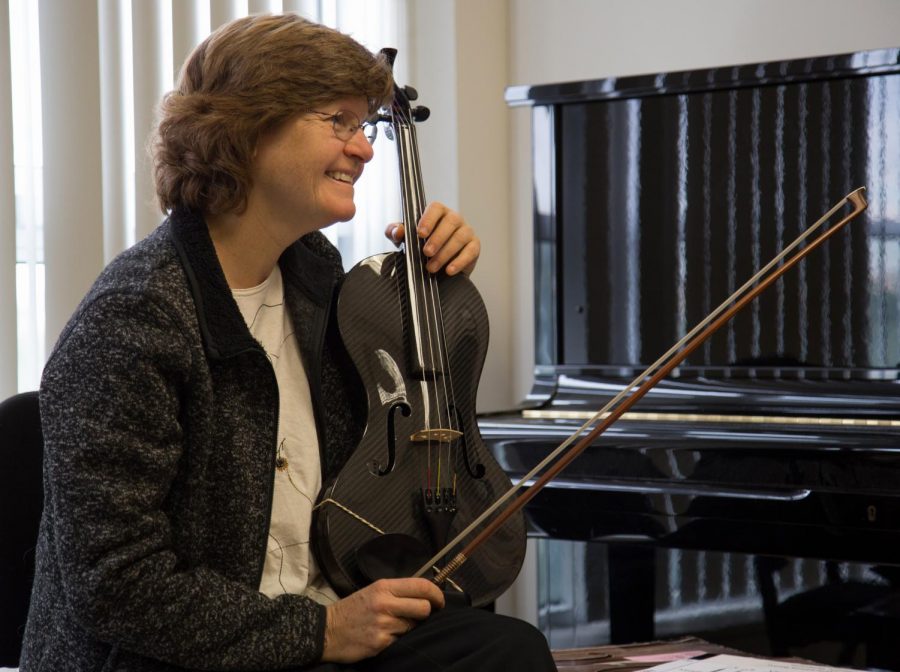Prominence of math in art, still relevant
STEM fields not mutually exclusive to music, visual design, actually enhance
ZACH RUBIO | THE DAILY EVERGREEN
Meredith Arksey talks about musical harmonics and its mathematical correlation with physics on Aug. 30.
September 6, 2018
I frequently find myself telling people, “I’m not artistic.”
I am what some refer to as “STEM-oriented.” I excel in math and science but fall short in creative endeavors, whether that be music or the fine arts. But why is it that my inclination for math and science can’t go hand in hand with artistic prowess?
In real life — though perhaps not in my own — math, science and art are all interconnected. One does not exist without the others and you only have to pay attention to see it.
Math and science are plainly evident in some forms of art, such as painting. Artists use geometric shapes to construct landscapes, colorful patterns and even the human form. Symmetry, a concept you might have focused on in early geometry, is something artists pay attention to while drawing or painting faces.
You might have wondered why some faces seen in art are more appealing than others, and the answer lies in a mathematical concept called the golden ratio.
The golden ratio occurs when a line is divided into two lines, such that the ratio of the larger segment divided by the smaller segment is equal to the ratio of the whole line divided by the larger segment.
Faces that exhibit the golden ratio, represented by the numerical constant phi, are considered especially beautiful and appealing to the eye — making them prime images for artists to recreate.
Additionally, math and science are slightly less obvious, though still present in music.
Meredith Arksey, a WSU associate professor of music for violin and viola, said the division of beats in music involves math and some composers utilize the power of math in their music.
For example, William Duckworth composed his album “Time Curve Preludes” using the Fibonacci sequence, a pattern in which each number is derived from the sum of the two previous numbers.
Arksey uses standing wave diagrams with some of her students. A standing wave occurs when a string vibrates at a frequency that allows waves to achieve maximum amplitude in between fixed points, she said. Students studying physics will learn about standing waves, often with the help of string instrument demonstrations.
“[It is] so fun to discover how science, especially physics and violin, can enhance each other,” Arksey said.
When so many people these days draw a distinction between science and art, it is arguably refreshing to see how these two seemingly separate disciplines can coexist and even enhance each other.
Since today’s society seems to favor math, science and technology, it can be argued that individuals are using these concepts in art as STEM becomes more prominent.























